Pashmina, often referred to as "soft gold," is world famous for its luxurious feel and delicate nature. This exquisite art involves transforming cashmere into luxury shawls or scarves. Fine cashmere wool grows on the underbelly of Changthangi goats found in the Himalayan regions of Kashmir and Ladakh. This goat hair has long been cherished for its unmatched softness and warmth. Pashmina shawls, scarves, and wraps have become prized possessions in many wardrobes worldwide, symbolizing elegance and sophistication.
However, Pashmina's gentle and sensitive nature poses a common dilemma for its owners: Can you wash Pashmina? Unlike many other fabrics, Pashmina requires special care to preserve its beauty and longevity. Its fine fibers are more susceptible to damage from improper washing methods, harsh detergents, and rough handling. Therefore, understanding how to care for Pashmina correctly is crucial for maintaining its luxurious texture and appearance.
So, we will delve into the intricacies of Pashmina. We will provide detailed instructions on how to wash Pashmina safely at home, ensuring that its softness and warmth remain. Moreover, we will offer valuable tips on how to keep your Pashmina clean with minimal washing. This helps to preserve its quality and extend its lifespan.
By following these guidelines, you can ensure that your Pashmina products remain as new as the day you acquired them. Whether you're a long-time admirer of Pashmina or a new owner looking to understand the best care practices, we will equip you. By the end of this blog, you will have the knowledge needed to maintain your cherished Pashmina pieces.
So, let's explore the world of Pashmina. We will begin to uncover the secrets to its care and maintenance, and answer the pressing question: Can you wash Pashmina? Let's embark on this journey to preserve the elegance and luxury of Pashmina.
What is Pashmina?
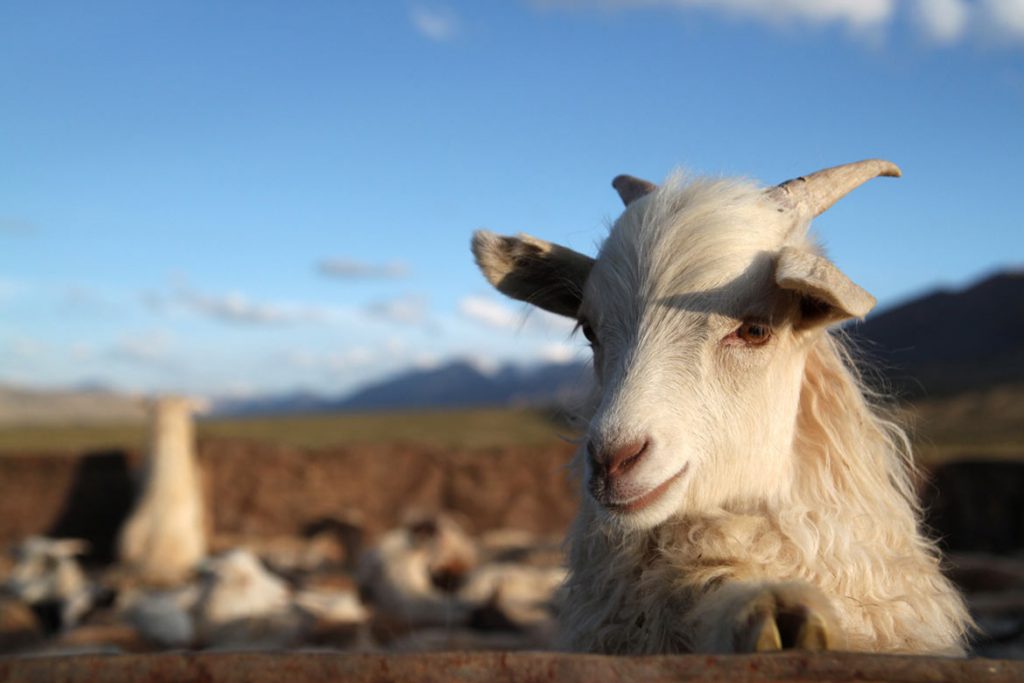
Pashmina is the intricate art of transforming Cashmere wool into Pashmina shawls and scarves. The fine wool comes from the Changthangi goats, native to the high altitudes of the Himalayas. Herders adapt these goats to survive in the harsh, cold climates of regions like Kashmir and Ladakh, where temperatures can plummet to extreme lows. To withstand such conditions, Changthangi goats grow an incredibly soft and warm undercoat, which is the source of luxurious shawls or scarves.
The term "Pashmina" comes from the Persian word "Pashm," meaning "soft gold." This name perfectly encapsulates the essence of Pashmina, highlighting its exceptional qualities and high value. The wool is famous for its unparalleled softness, warmth, and lightweight nature. These properties make Pashmina a highly coveted material in the fashion world, prized for its ability to provide both comfort and elegance.
Pashmina's journey from raw cashmere wool to finished product involves a meticulous and labour-intensive process. Herders carefully comb the wool from the undercoat of the Changthangi goats during the spring moulting season. They do this by hand to ensure the collection of the finest fibers without harming the animals. Once collected, the raw wool undergoes a series of steps to transform it into the luxurious fabric we know as Pashmina.
Processing Raw Wool
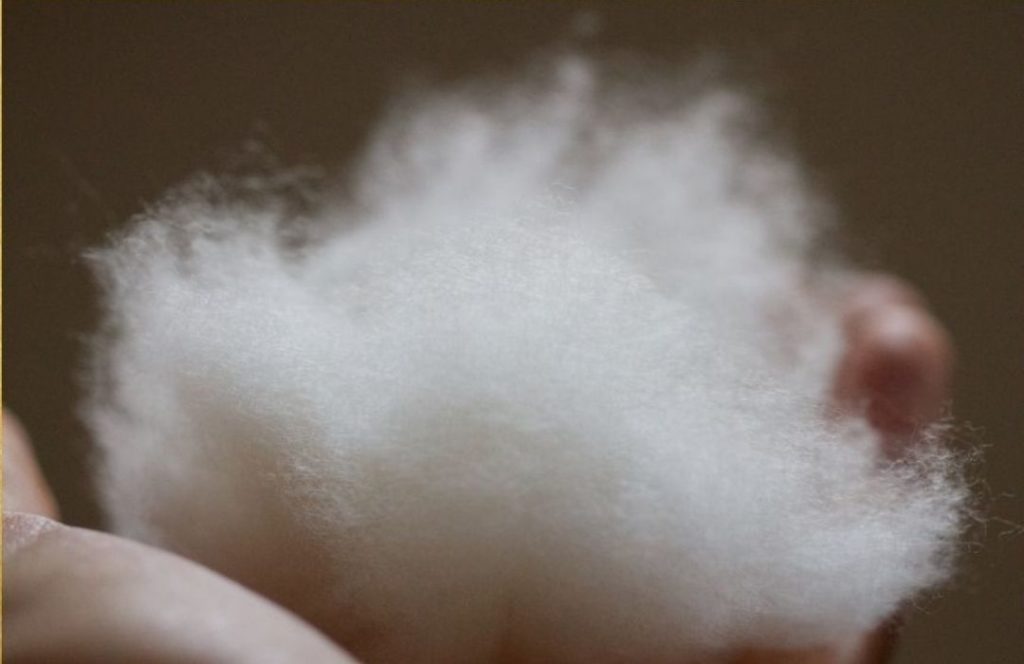
First, herders clean and sort the raw wool to remove any impurities. Then artisans spin the clean fibers into yarn, a delicate process that requires great skill and precision. Next, weavers weave this yarn into fabric using traditional handlooms. Depending on the desired end product, the fabric may undergo additional processes such as dyeing and embroidery. Each step in this journey is carried out by skilled artisans who have inherited their craft through generations. They ensure that the tradition and quality of Pashmina production remain preserved.
The result of this intricate process is a fabric that is incredibly soft to the touch, providing a level of comfort and warmth that other materials can never match. Pashmina shawls, scarves, and wraps are not only functional but also exude an air of sophistication and luxury. The fine texture and lightweight nature of Pashmina make it suitable for a variety of uses, from keeping warm in chilly weather to adding a touch of elegance to formal attire.
Cashmere vs Wool
What sets Cashmere apart from regular wool is its unique fineness and texture. While regular sheep wool can be coarse and itchy, Cashmere is exceptionally fine. Its fibers measure between 12 to 15 microns in diameter. This fineness gives Pashmina its signature softness and allows it to be woven into incredibly delicate and lightweight fabrics. Moreover, Pashmina has excellent insulation properties. It provides warmth without the bulk, making it an ideal choice for those seeking both style and comfort.
The originating of Pashmina in the high Himalayas, coupled with its exceptional qualities of softness, warmth, and lightweight nature, make Pashmina highly sought-after. The intricate craftsmanship involved in creating Pashmina products further adds to their allure. These properties make Pashmina products cherished possessions that stand the test of time.
Making of Pashmina
Creating Pashmina products involves several meticulous steps, each requiring immense skill and patience. This process, deeply rooted in tradition, transforms raw cashmere wool into exquisite shawls and scarves, reflecting the rich cultural heritage of regions like Kashmir and Ladakh. Here’s a closer look at the intricate journey of Pashmina.
Collection of Raw Wool
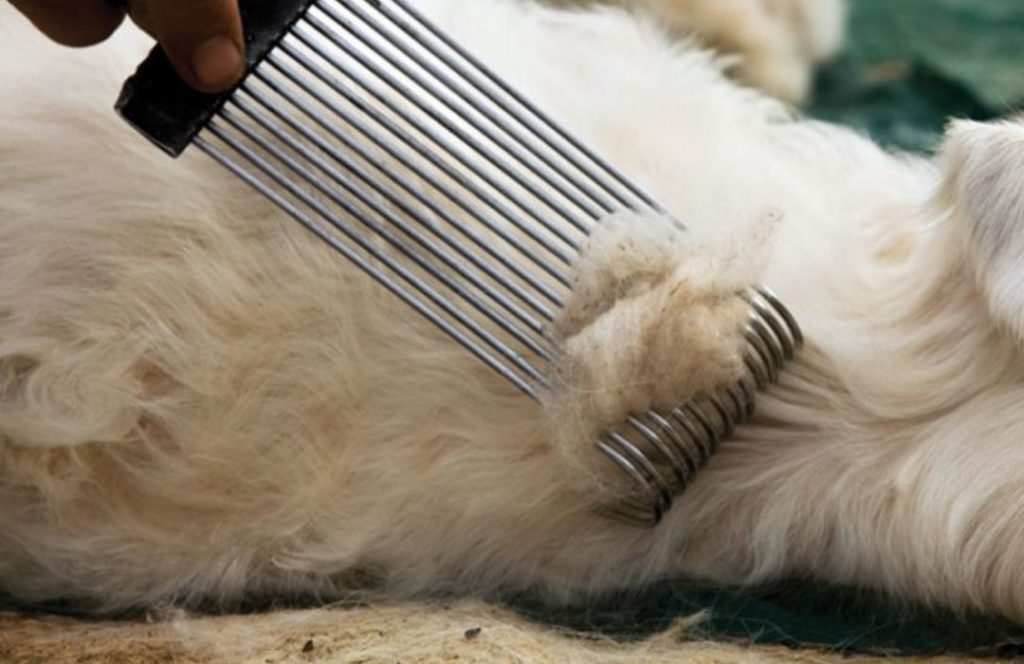
The journey of Pashmina begins with the collection of raw wool from the Changthangi goats, native to the high altitudes of the Himalayas. During the moulting season, typically in spring, the goats naturally shed their undercoat. Skilled herders carefully hand-comb the wool from the underbelly of the goats to collect the fine fibers. Herders do this manually to ensure the collection of the finest quality fibers without harming the animals. The collected wool is incredibly soft, lightweight, and warm, making it ideal for creating luxurious Pashmina products.
Cleaning and Sorting
Once herders collect the raw wool, it undergoes a thorough cleaning process to remove any impurities such as dirt, grease, and coarse outer hair. Then artisans sort the clean fibers meticulously and make sure to use only the finest and softest fibers. This step is crucial as it determines the quality and texture of the final product. The sorted wool is now ready for spinning into yarn.
Spinning the Wool
Spinning the wool into yarn is a delicate and labour-intensive process. Traditionally, artisans do this using a wooden spinning wheel known as a "Charkha." Often women artisans spin the fibers by hand, transforming the raw wool into fine, strong yarn. This step requires a great deal of precision and expertise to ensure the yarn is even and consistent. The spun yarn forms the foundation of Pashmina fabric, setting the stage for the weaving process.
Weaving the Fabric
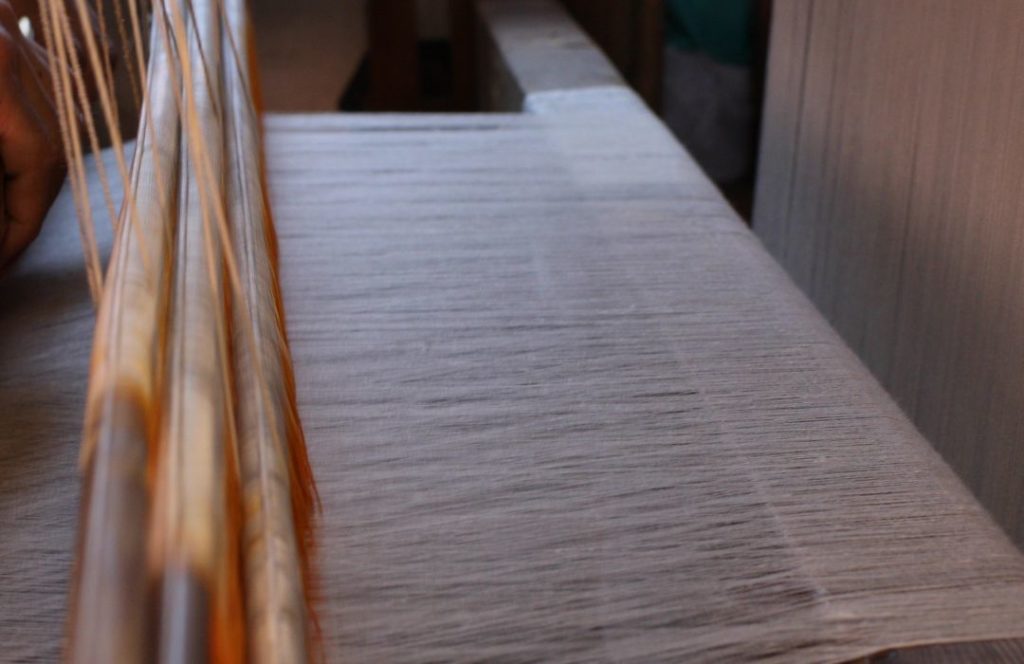
The spun yarn is then woven into fabric, often on traditional handlooms. Weaving Pashmina is an art form that has been passed down through generations. The handloom weaving process allows for intricate designs and patterns to be created, adding to the unique beauty of each piece. This step requires immense skill and attention to detail, as the weavers must carefully interlace the yarns to create a smooth, even fabric. The resulting Pashmina fabric is incredibly soft, lightweight, and luxurious.
Embroidery and Finishing Touches
To enhance the beauty and elegance of Pashmina products, many pieces undergo intricate embroidery. Artisans skilled in traditional embroidery techniques embellish the fabric with beautiful patterns and designs. This step adds a unique touch to each Pashmina shawl or scarf, making it a true work of art. Artisans embellish the products with embroidery, done by hand, requiring great patience and precision.
After the embroidery, the Pashmina fabric undergoes finishing touches, including washing, stretching, and pressing. These steps ensure the fabric is smooth, soft, and ready for use. The finished product is a luxurious Pashmina shawl, scarf, or wrap that embodies the rich cultural heritage and craftsmanship of the regions where it is produced.
Why is Pashmina So Gentle and Sensitive?

Pashmina is famous for its exceptional softness and fineness, qualities that contribute to its gentle and sensitive nature. The fibers used to create Pashmina come from the undercoat of Changthangi goats, which are native to the high altitudes of the Himalayas. These fibers are incredibly fine, often measuring less than 15 microns in diameter, which is finer than a human hair. This ultra-fine quality gives Pashmina its signature softness and luxurious feel.
Delicate Fibers
The fineness of Pashmina fibers makes the fabric extremely delicate. Each fiber is so thin and lightweight that it can one can easily damage it by harsh handling or improper care. This sensitivity is one of the reasons Pashmina requires special attention, especially when it comes to cleaning and storage. The fabric's delicate nature means that even minor mishandling can lead to irreparable damage, such as stretching, pilling, or tearing.
Sensitivity to Chemicals and Temperature
Pashmina’s sensitivity extends to its reaction to chemicals and temperature. Harsh chemicals found in many detergents can break down the fibers, stripping them of their natural oils and leading to a rough, brittle texture. Similarly, high temperatures, whether from hot water or direct heat sources, can cause the fibers to shrink or become distorted. This is why Pashmina one should clean with mild, pH-neutral detergents and in lukewarm water, ensuring that the fabric retains its softness and shape.
Importance of Gentle Handling
The delicate nature of Pashmina underscores the importance of gentle handling. When washing, it’s crucial to avoid vigorous scrubbing or wringing, which can stretch or break the fibers. Instead, fabric experts recommend gentle soaking followed by a light pressing to remove excess water. Similarly, when drying, Pashmina should be laid flat on a clean, dry towel and kept away from direct sunlight to prevent fading and fiber damage.
Craftsmanship and Care
Understanding the gentleness and sensitivity of Pashmina helps in appreciating the meticulous craftsmanship involved in its creation. Artisans who work with Pashmina handle the fabric with great care, from spinning the yarn to weaving and embroidering the final product. This delicate process highlights the skill and patience required to produce a piece of Pashmina, making each item a testament to the artisans' dedication.
Proper care of Pashmina not only preserves its beauty and longevity but also honours the craftsmanship and cultural heritage it represents. By treating Pashmina with the respect it deserves, one can enjoy its unparalleled softness, warmth, and elegance for years to come.
Can You Wash Pashmina?
Yes, you can wash Pashmina, albeit with a careful and gentle approach. Given its delicate fibers, improper washing can cause irreparable damage. Many people prefer to dry clean Pashmina to ensure its safety, but hand washing at home is also an option if done correctly. Knowing the right techniques and using appropriate products is essential to maintain the fabric's integrity and beauty.
Why Washing Pashmina is Tricky?
The ultra-fine fibers of Pashmina make it extremely sensitive to harsh chemicals, high temperatures, and rough handling. So, washing it improperly can lead to shrinking, stretching, or even tearing of the fabric. This sensitivity is why many people opt for professional dry cleaning so that experts handle the fabric with the utmost care.
Hand Washing Pashmina at Home
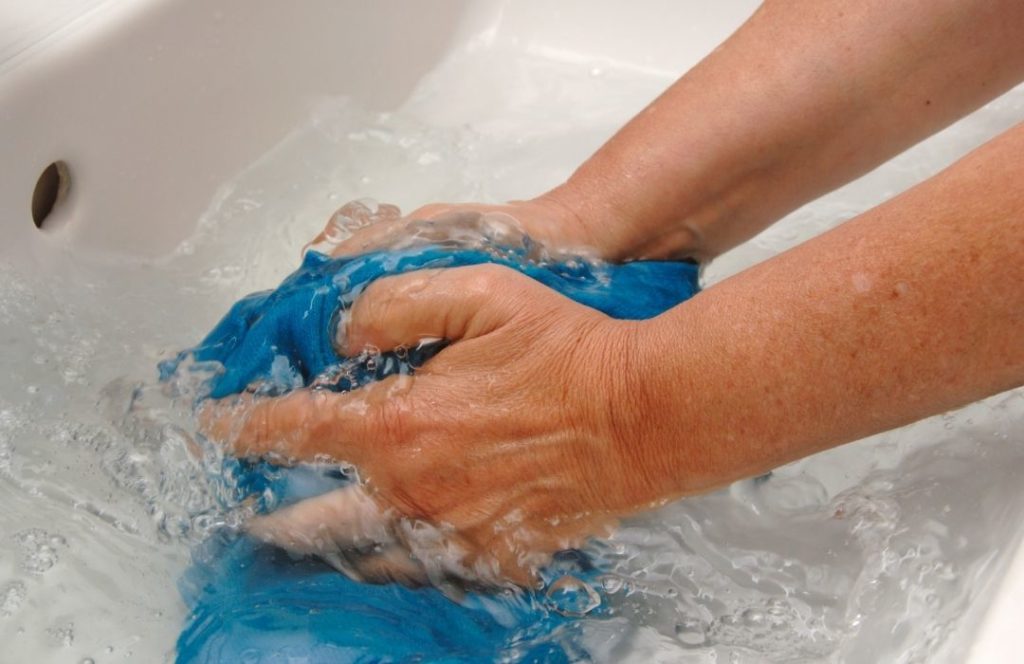
If you decide to wash your Pashmina at home, it’s crucial to follow specific steps to ensure you don’t damage the delicate fibers:
- Use Lukewarm Water: Fill a basin with lukewarm water. Hot water can cause the fibers to shrink as well as lose their shape.
- Mild Detergent: Add a small amount of mild, pH-neutral detergent designed for delicate fabrics. Baby shampoo can also be a good alternative.
- Gentle Soak: Submerge the Pashmina in the water and let it soak for about 10-15 minutes. Avoid agitating or scrubbing the fabric as this can cause the fibers to tangle and break.
- Rinse Carefully: Rinse the Pashmina in clean, lukewarm water until all the detergent is removed. Ensure that the water is not too cold or too hot.
- Avoid Wringing: Instead of wringing out the water, gently press the fabric against the side of the basin to remove excess water.
Drying and Storing Pashmina
Proper drying is just as important as washing:
- Lay Flat to Dry: Lay the Pashmina flat on a clean, dry towel and roll it up to absorb excess moisture. Then, unroll and lay the Pashmina flat on a dry towel to air dry away from direct sunlight and heat sources.
- Avoid Hanging: Hanging Pashmina can cause it to stretch out of shape. Always dry it flat to maintain its form.
Washing Pashmina at home can be done safely if you follow these steps and handle the fabric with care. However, if you’re ever in doubt, opting for professional dry cleaning is a safe and effective alternative. By understanding and respecting the delicate nature of Pashmina, you can keep your luxurious shawls and scarves looking beautiful and pristine for years to come.
How can you wash Pashmina?
Washing Pashmina at home can be a delicate process, but the answer to the question "Can you wash Pashmina" is YES! With the right steps, you can maintain its luxurious quality and extend its life. Here’s a detailed guide to help you wash your Pashmina safely:
Step 1: Fill a Basin with Cold Water
Start by using a clean basin or sink. Fill it with cold water, as hot water can cause the fine fibers of Pashmina to shrink and lose their shape. Cold water is gentle on the fibers and helps maintain the fabric’s integrity.
Step 2: Add a Gentle Detergent
Next, add a small amount of gentle detergent specifically designed for delicate fabrics. A good alternative is baby shampoo, which is mild and non-abrasive. Avoid using regular laundry detergents, bleach, or fabric softeners, as these can be too harsh for Pashmina and damage the delicate fibers.
Step 3: Soak the Pashmina
Submerge your Pashmina completely in the cold water. Let it soak for about 15 minutes. During this time, you can gently agitate the water with your hands to help the detergent penetrate the fibers and loosen any dirt or oils. However, avoid scrubbing or rubbing the fabric, as this can cause the fibers to tangle and break.
Step 4: Gently Wash
After soaking, gently squeeze the fabric to remove dirt and oils. Be very careful during this step; avoid twisting, wringing, or harshly handling the Pashmina. Gentle pressing is sufficient to clean the fabric without causing damage.
Step 5: Rinse Thoroughly
Once the Pashmina is clean, drain the soapy water from the basin. Refill the basin with clean, cold water to rinse out the detergent. You may need to rinse the Pashmina several times, replacing the water each time, until all the detergent is completely removed. Gently press the fabric in the clean water to help rinse out the soap.
Step 6: Remove Excess Water
After rinsing, carefully lift the Pashmina out of the water and gently press it against the side of the basin to remove excess water. Do not wring or twist the fabric, as this can stretch and damage the delicate fibers.
Step 7: Dry Properly
Lay the Pashmina flat on a clean, dry towel. Roll up the towel with the Pashmina inside to absorb excess moisture. Unroll it and lay the Pashmina flat on another dry towel in a well-ventilated area, away from direct sunlight and heat sources, to air dry. Avoid hanging the Pashmina, as this can cause it to stretch out of shape.
Step 8: Store Carefully
Once the Pashmina is completely dry, store it properly to maintain its quality. Fold it neatly and place it in a breathable fabric bag to protect it from dust and pests. Avoid using plastic bags, as these can trap moisture and cause mildew.
By following these careful steps, you can wash your Pashmina at home without damaging its delicate fibers. Proper washing and storage will help maintain the luxurious feel and appearance of your Pashmina shawls, scarves, and wraps for years to come.
Pashmina - Precautions for Use
Minimizing the need for frequent washing is crucial to preserving the delicate fibers of your Pashmina. Here are some practical tips to keep your Pashmina clean and fresh with minimal washing:
Wear with Care
When wearing a Pashmina, be mindful of your surroundings to avoid situations where it might get dirty or stained. For example, avoid wearing it while eating or drinking, and be cautious in areas where it could come into contact with dirt or smoke. By being careful about where and when you wear your Pashmina, you can significantly reduce the chances of it getting dirty.
Spot Clean
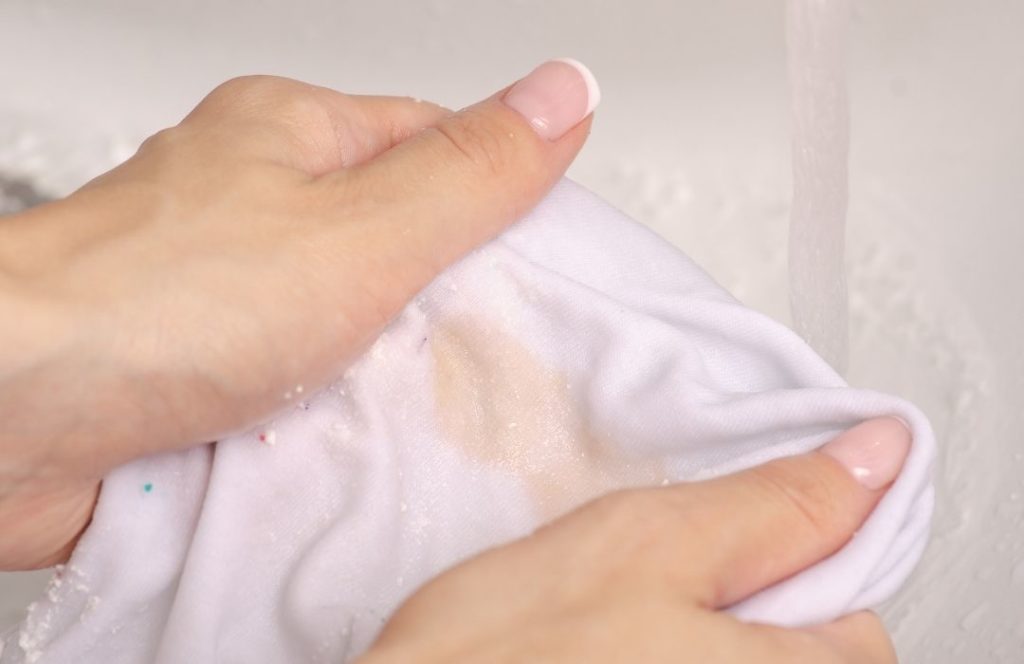
If you notice a small stain or spot on your Pashmina, resist the urge to wash the entire item. Instead, spot-clean the affected area with a damp cloth and a mild detergent specifically designed for delicate fabrics. Just gently dab the stain, avoiding any harsh rubbing or scrubbing that could damage the fibers. Spot cleaning is an effective way to address minor stains without subjecting the entire Pashmina to the stress of washing.
Air Out
After wearing your Pashmina, air it out to keep it fresh. Firstly, lay it flat in a well-ventilated area. Secondly, keep it away from direct sunlight and strong odours. Airing out your Pashmina helps to eliminate any absorbed odours and allows the fabric to breathe, thus reducing the need for frequent washing. This simple step can help maintain the softness and integrity of the fibers.
Store Properly
Proper storage is key to keeping your Pashmina clean and in good condition. Store it in a clean, dry place, preferably in a breathable fabric bag to protect it from dust and pests. Also, avoid plastic bags, as they can trap moisture and lead to mildew. Ensure that the storage area is away from direct sunlight and potential contaminants like perfumes or cosmetics, which can cause stains or damage.
By following these tips, you can significantly extend the life of your Pashmina and reduce the need for frequent washing. Taking these preventive measures additionally helps maintain the luxurious feel and appearance of your Pashmina shawls, scarves, and wraps, ensuring they remain a cherished part of your wardrobe for years to come.
Final Thoughts
Caring for Pashmina requires a gentle touch and careful handling. Products of this luxurious art , known for its softness and warmth, deserve special attention to maintain its beauty and longevity. Understanding the delicate nature of Pashmina is the first step in ensuring it remains a cherished part of your wardrobe for years to come.
Can You Wash Pashmina? Yes, you can, but it requires a meticulous approach to avoid damage. From using cold water and gentle detergents to carefully rinsing and drying, each step must be performed with the utmost care. Avoiding harsh chemicals and high temperatures is crucial to preserving the delicate fibers that make Pashmina so special. By following the right techniques, you can keep your Pashmina clean without compromising its quality.
Beyond washing, proper maintenance and storage are key to extending the life of your Pashmina. Minimizing the need for frequent washing through careful wear, spot cleaning, airing out, and appropriate storage can significantly protect the fabric. These simple yet effective practices help maintain the softness, integrity, and elegance of Pashmina items.
Embrace the elegance and luxury of Pashmina while ensuring it remains in pristine condition. Support authentic Pashmina products and appreciate the craftsmanship that goes into creating these timeless pieces. Recognize the skill and dedication of artisans who transform raw cashmere wool into exquisite shawls, scarves, and wraps. Their meticulous work reflects a rich cultural heritage and a commitment to quality.
Also read: Fake Pashmina – What are the Rights of Artisans?
Conclusion
In conclusion, Pashmina is an embodiment of luxury, tradition, and skilled craftsmanship. By taking proper care of your Pashmina, you honour the artisans who create these beautiful items and ensure they remain a treasured part of your wardrobe. Whether you choose to hand wash or dry clean your Pashmina, always remember the importance of gentle handling and proper maintenance.
So, can you wash Pashmina? Absolutely, but it requires a delicate touch and a keen understanding of its unique properties. Treat your Pashmina with the respect it deserves, and it will continue to provide warmth, comfort, and elegance for many years. Appreciate the art, embrace the luxury, and enjoy the timeless appeal of Pashmina.
Also read: Peach Perfection: Embracing Pantone’s Color of the Year with Cashmere Wraps